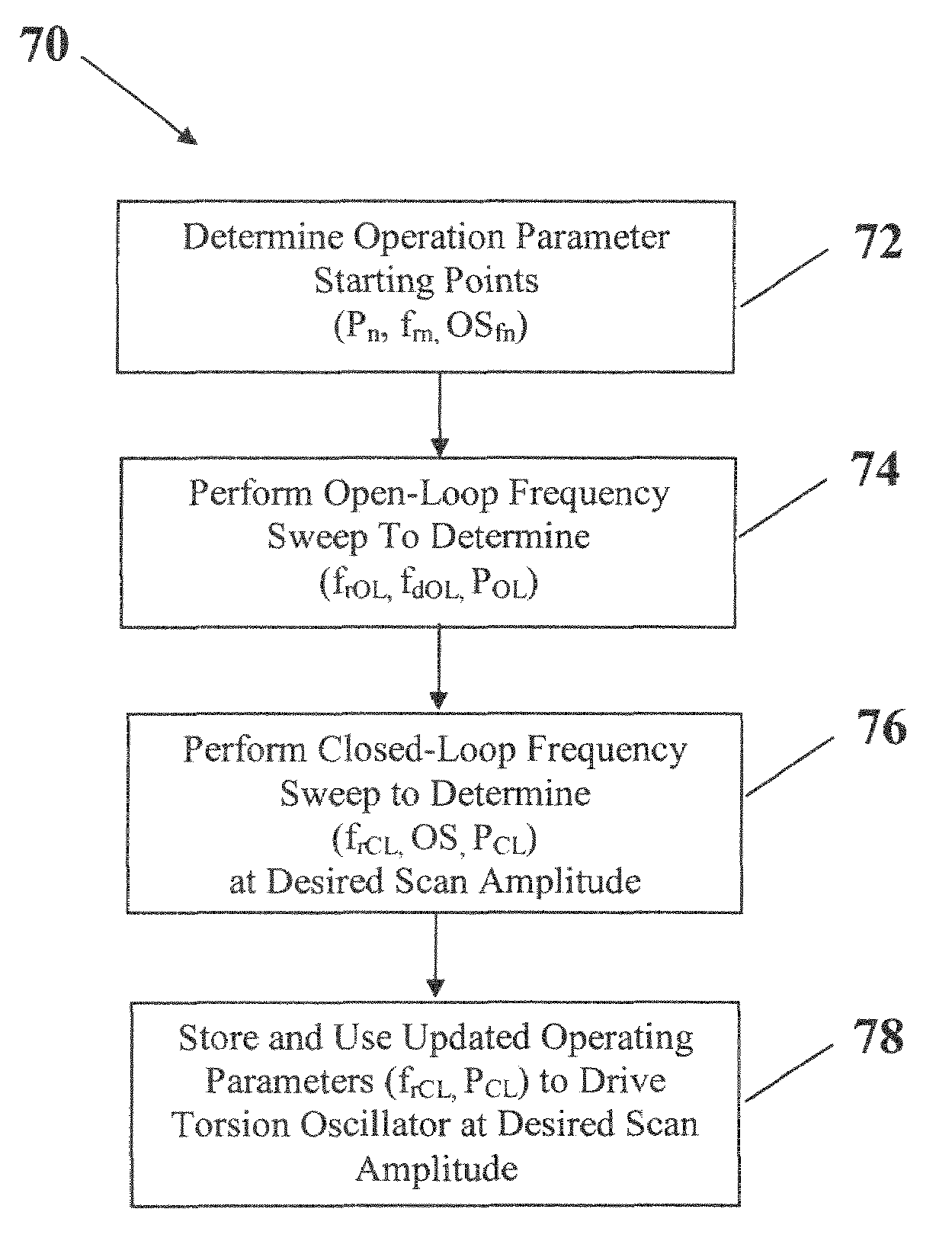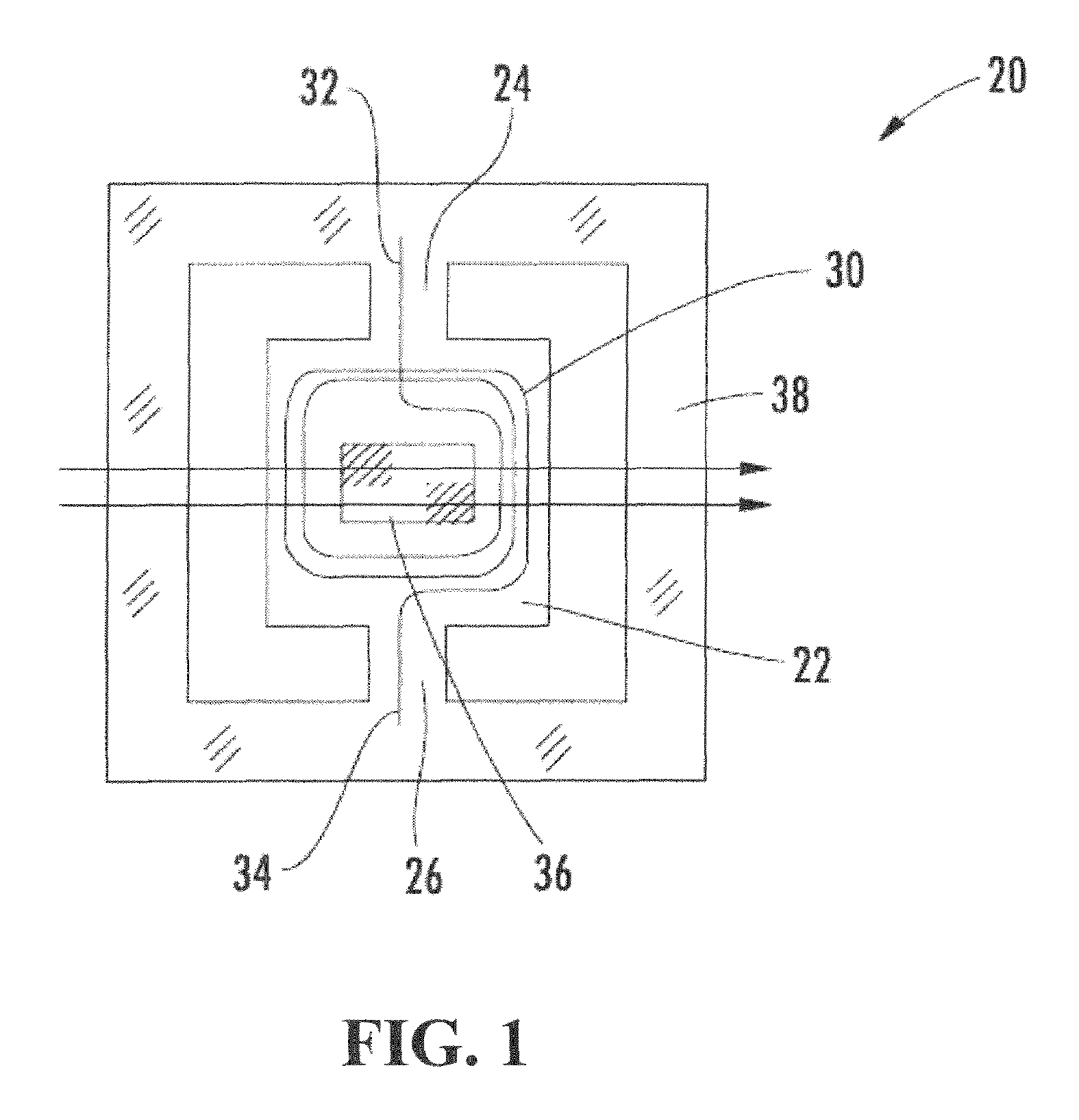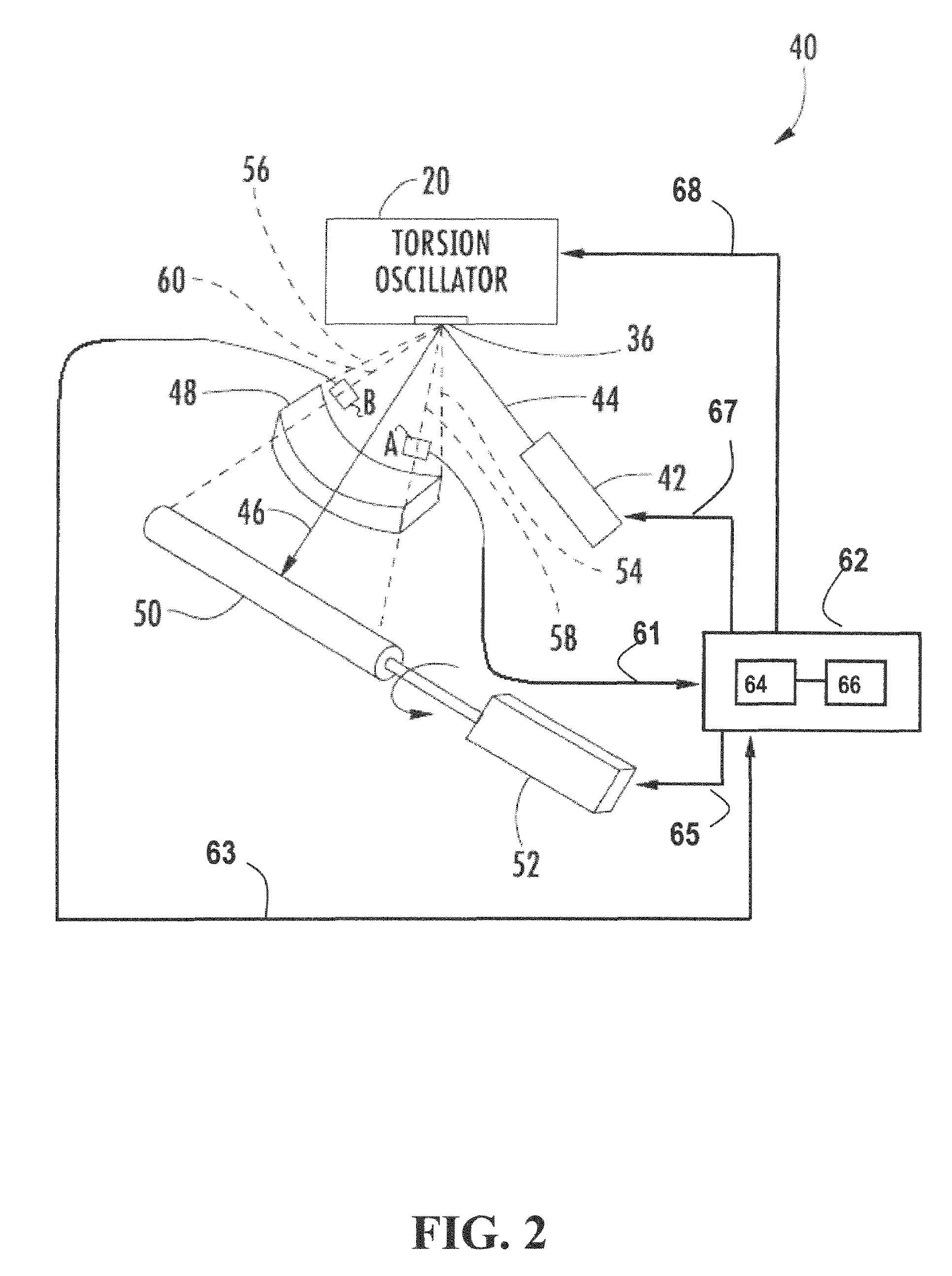Method of determining resonant frequency
a resonant frequency and frequency technology, applied in the field of oscillator, can solve problems such as affecting the sweep performance of torsion oscillators
- Summary
- Abstract
- Description
- Claims
- Application Information
AI Technical Summary
Benefits of technology
Problems solved by technology
Method used
Image
Examples
Embodiment Construction
[0014]In many scanners and printers used with computers, data terminals, digital imaging systems, and similar devices, a light beam (preferably a laser beam) is reflected off a torsion oscillator minor to sweep a target. In very general terms, torsion oscillator construction is such that its motion is controlled by the characteristics of the electrical drive signal supplied to it, including the power level and the drive frequency. Specifically, in order to maintain stability the drive signal should be maintained substantially at the resonant frequency of the torsion oscillator.
[0015]A system for operating an imaging system typically includes a circuit for driving the system's torsion oscillator in a closed-loop scan amplitude control and at a substantially resonant frequency. The drive signal (also referred to as the “input signal”) may be any form of signal such as a sinusoidal signal, an impulse signal, a square wave signal or any other type of signal. Sensors are positioned along...
PUM
 Login to View More
Login to View More Abstract
Description
Claims
Application Information
 Login to View More
Login to View More - R&D
- Intellectual Property
- Life Sciences
- Materials
- Tech Scout
- Unparalleled Data Quality
- Higher Quality Content
- 60% Fewer Hallucinations
Browse by: Latest US Patents, China's latest patents, Technical Efficacy Thesaurus, Application Domain, Technology Topic, Popular Technical Reports.
© 2025 PatSnap. All rights reserved.Legal|Privacy policy|Modern Slavery Act Transparency Statement|Sitemap|About US| Contact US: help@patsnap.com



